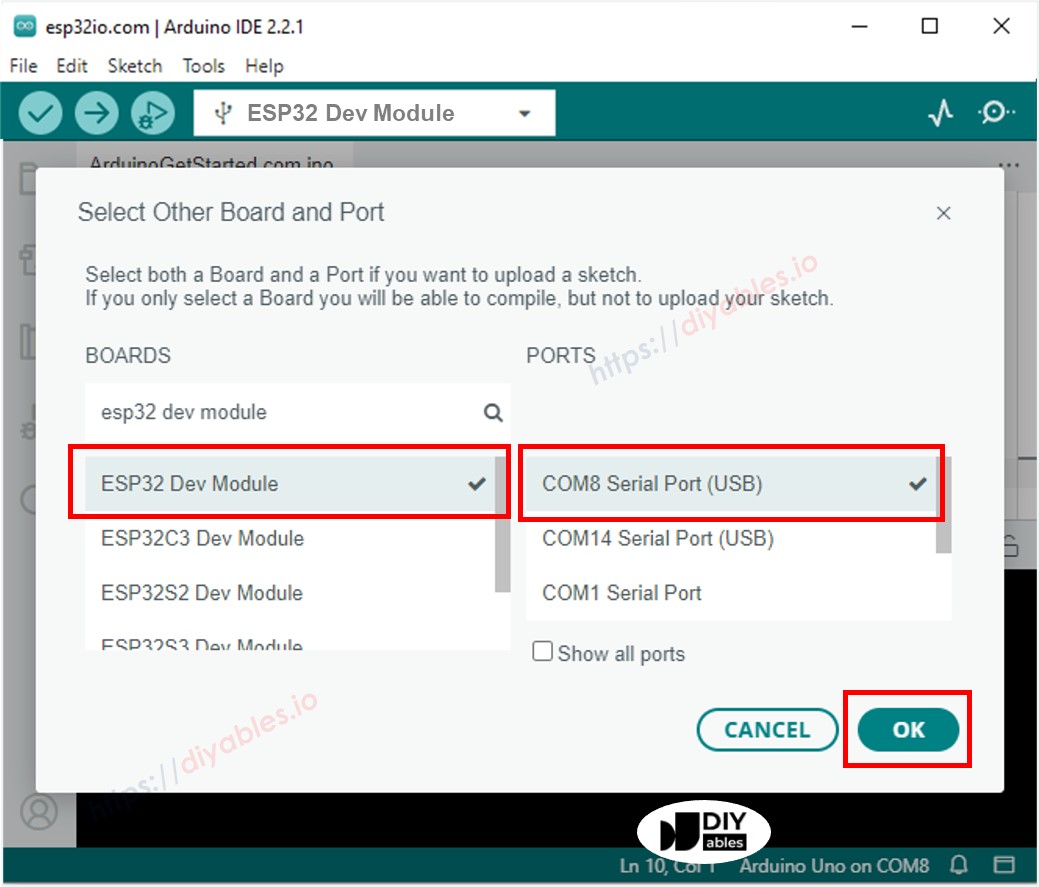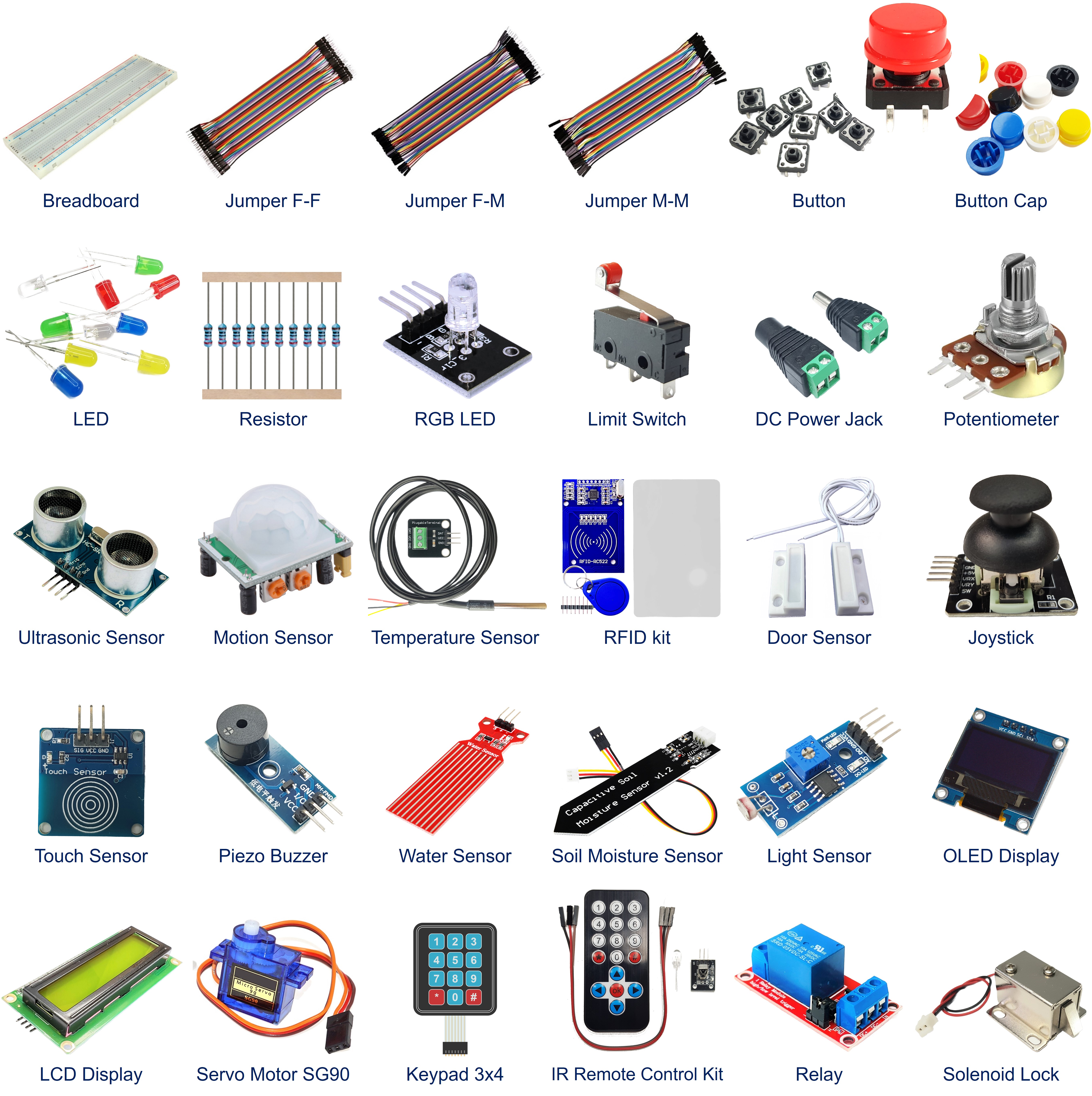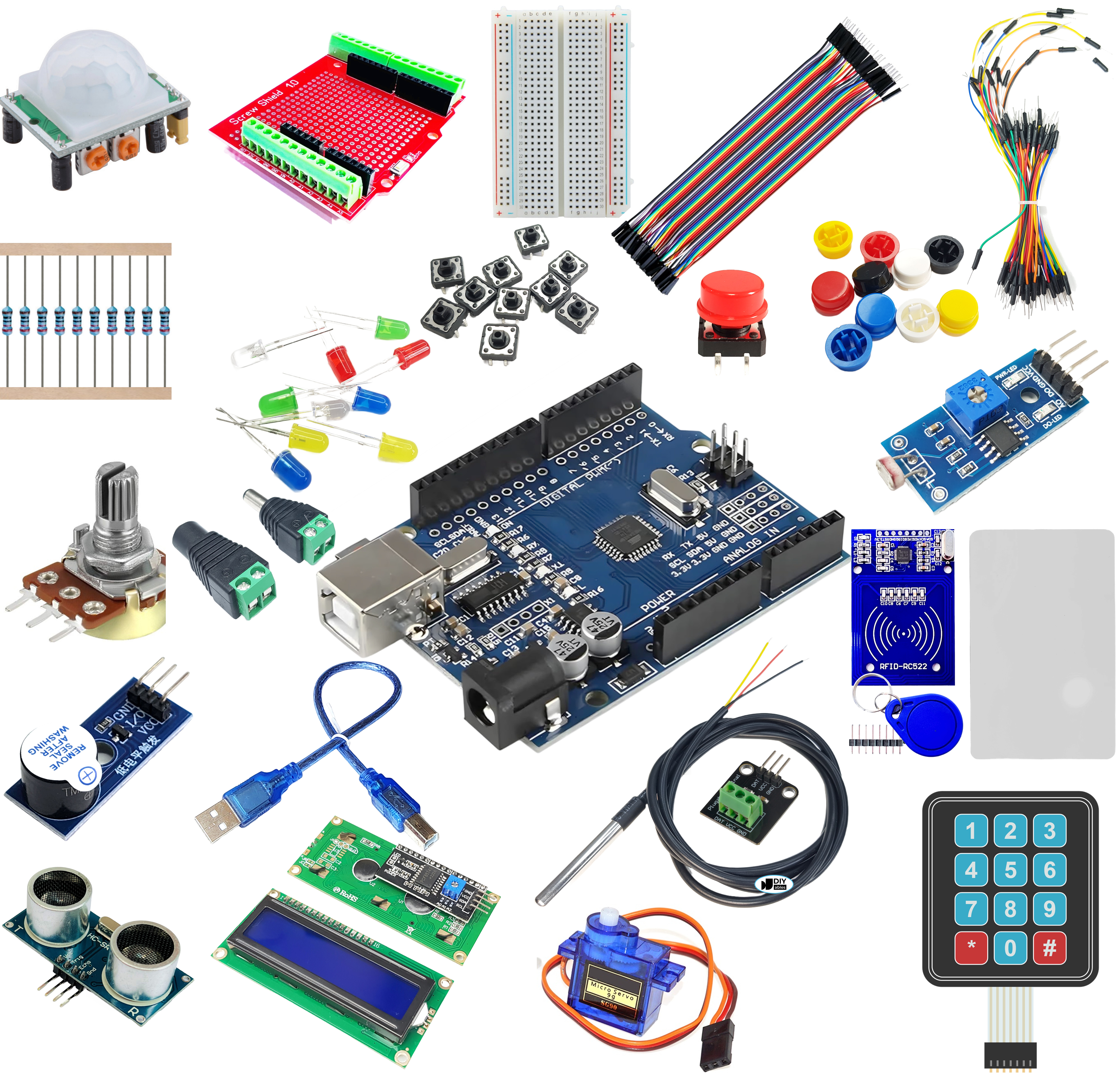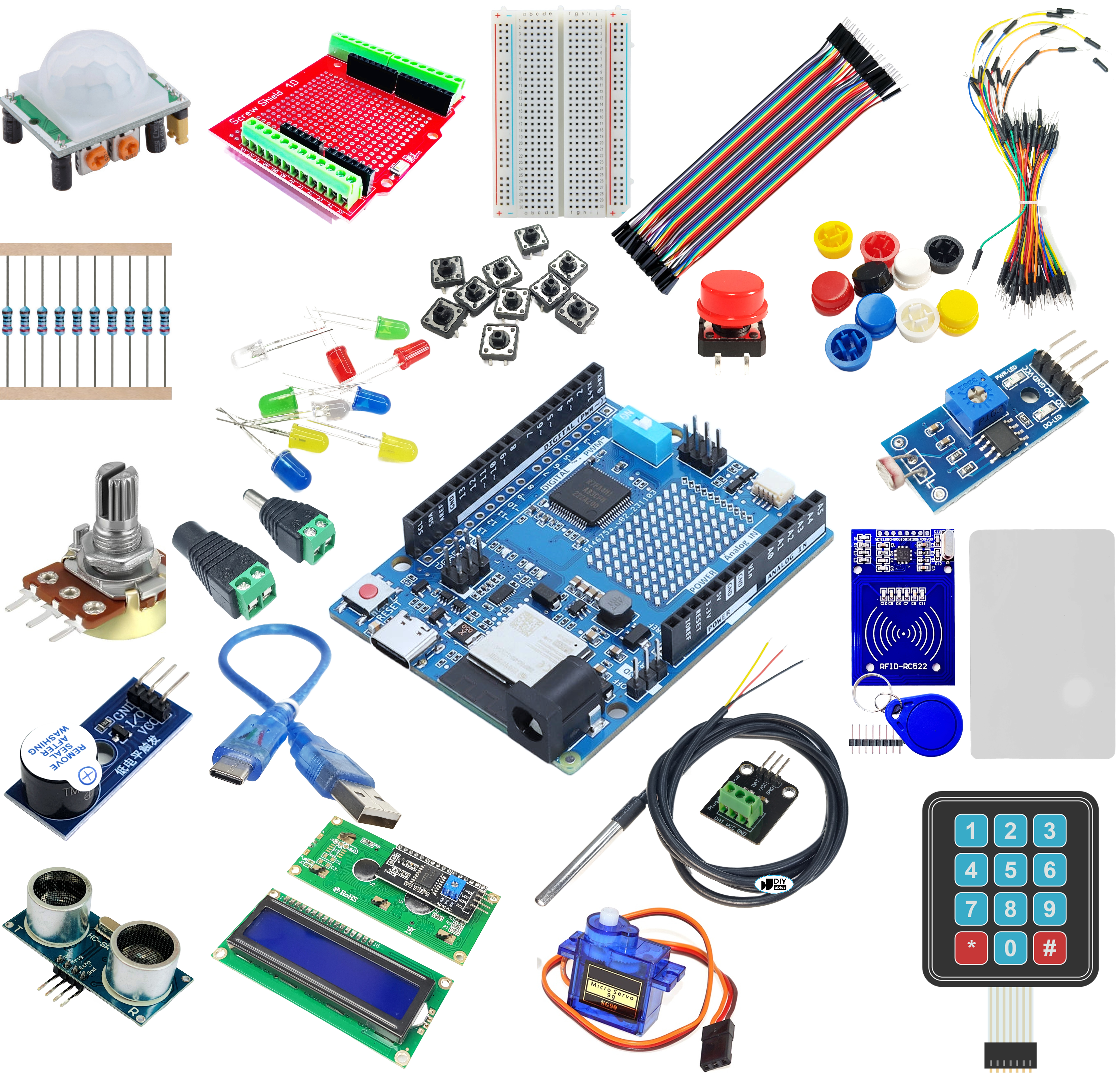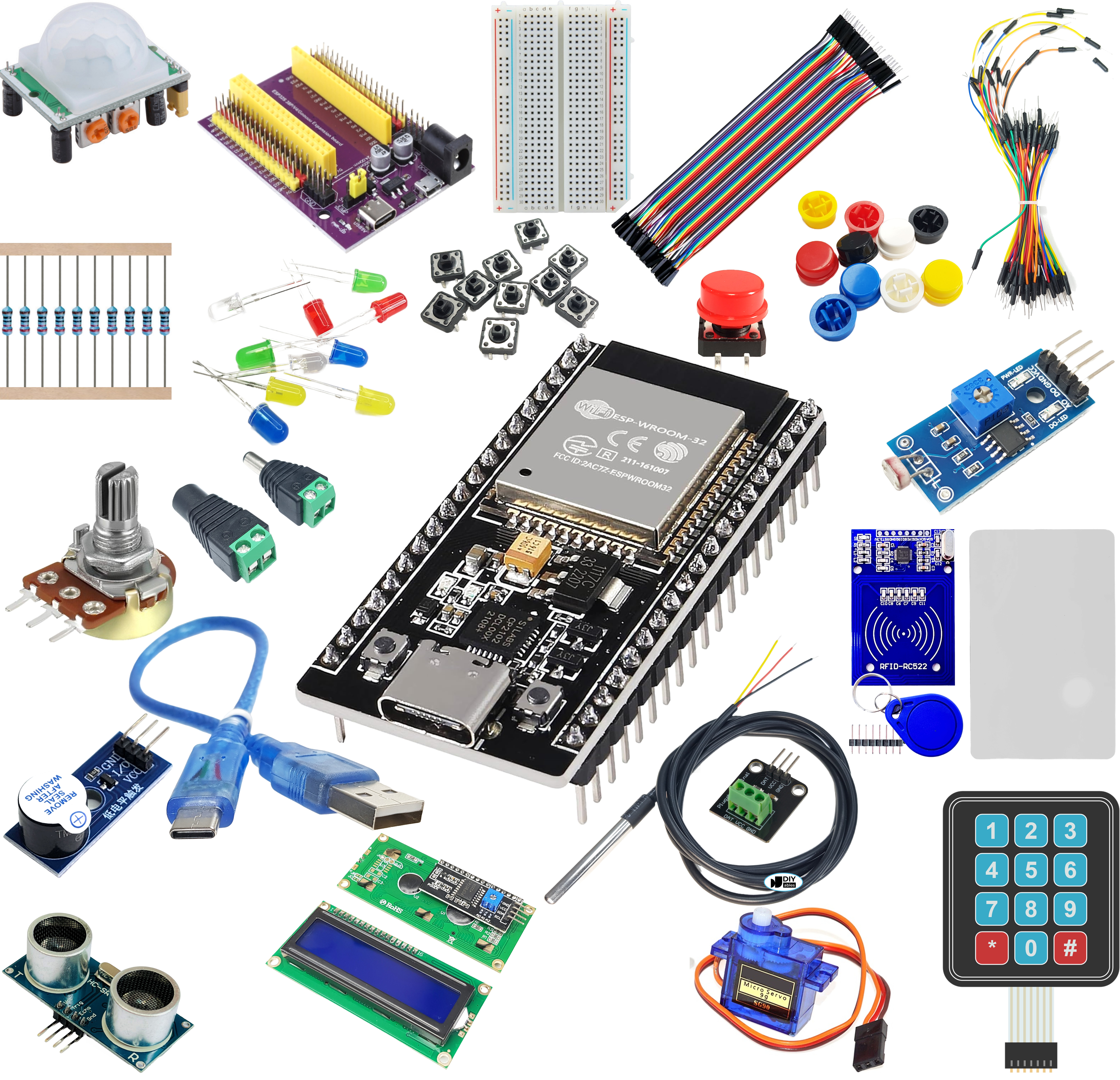DIYables ESP32 Starter Kit
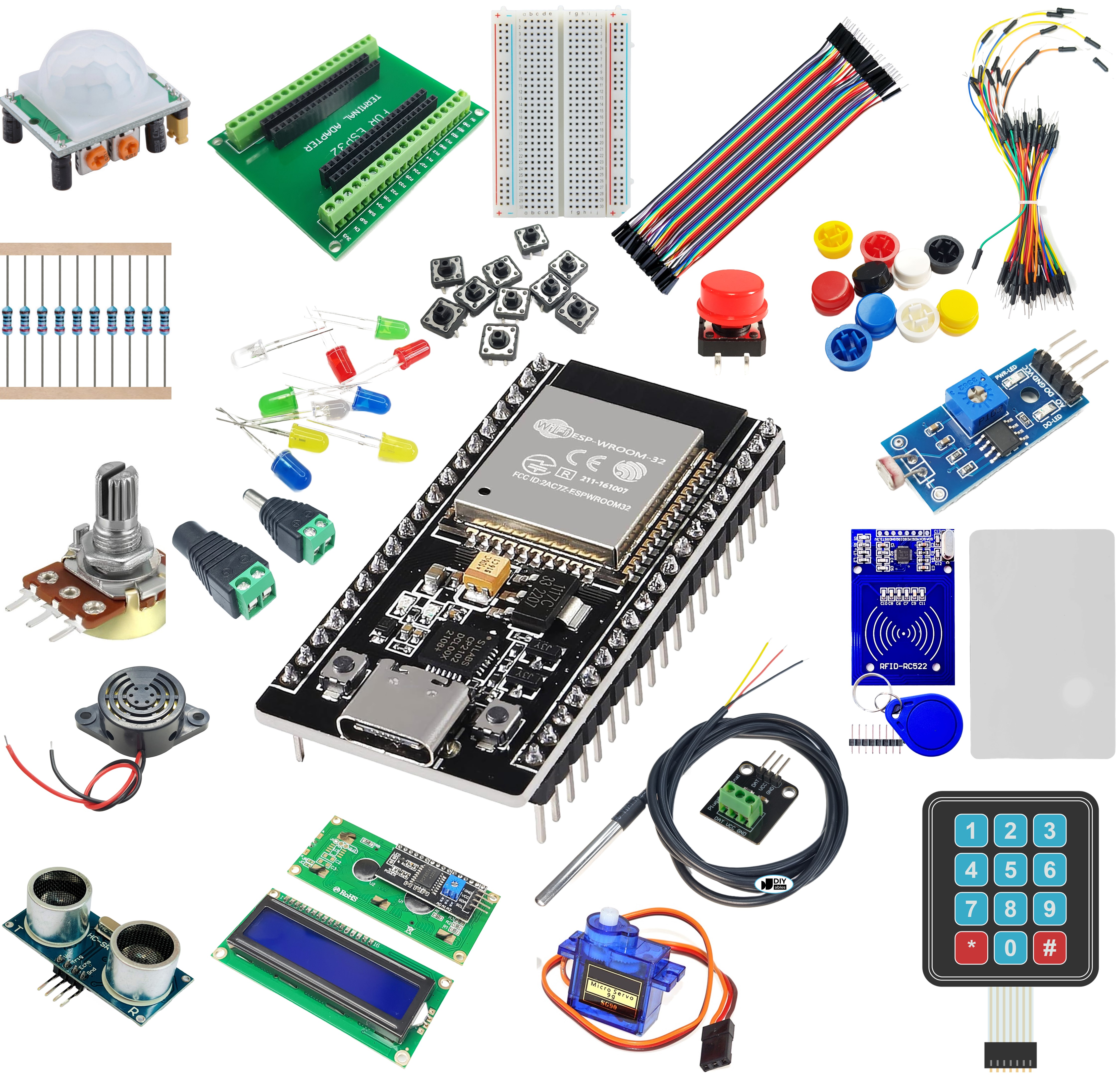 Click to zoom
Click to zoom
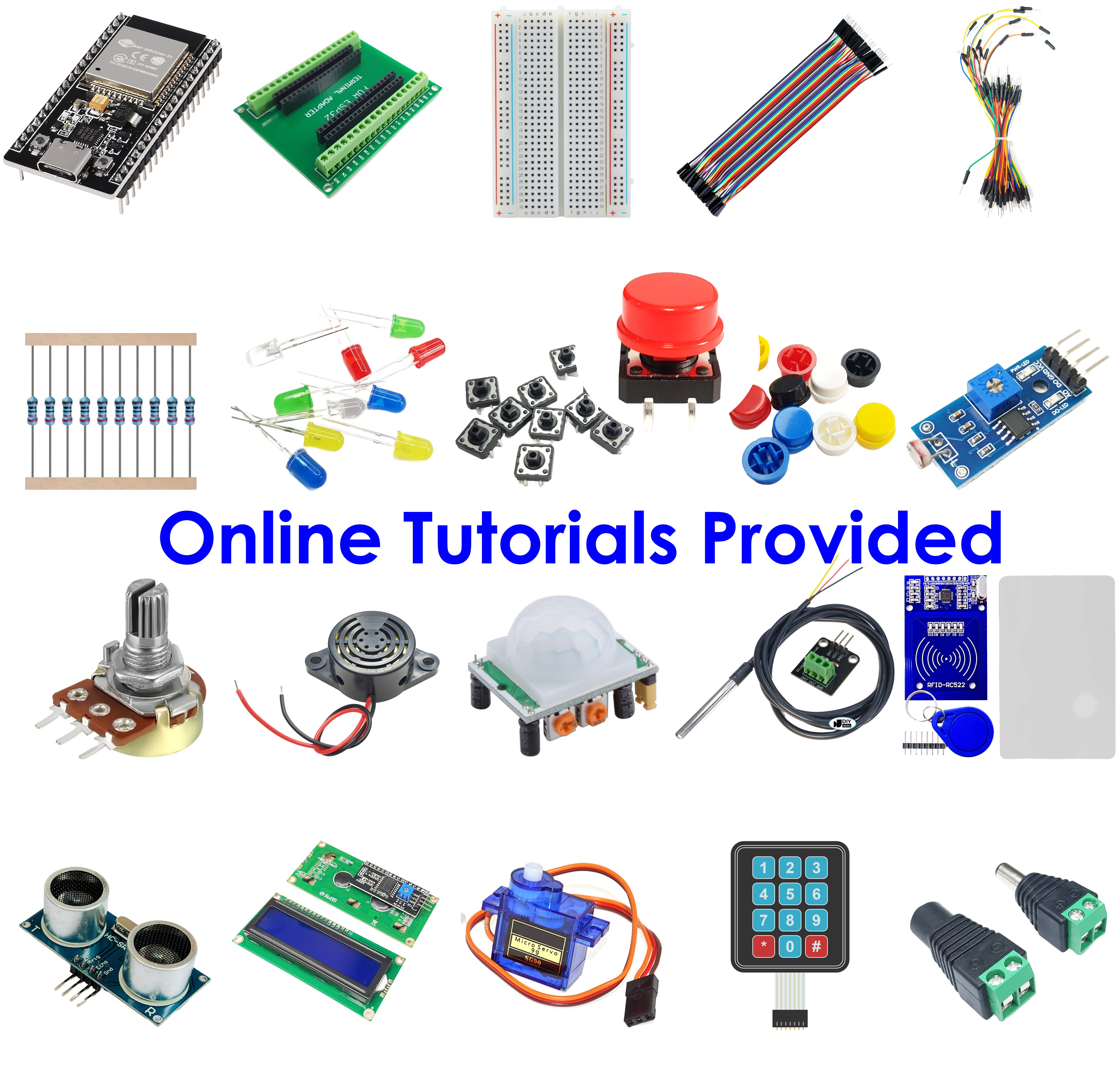



Quick Overview
- 20-IN-1 ESP32 STARTER KIT: Includes 38-pin ESP32 Development board, expansion board, sensors, modules, wires, display, and other essential components to kickstart your DIY or IoT projects.
- BREADBOARD & JUMPERS INCLUDED: Comes with a half-size breadboard, male-to-female and female-to-female jumper wires for quick and reliable prototyping.
- POPULAR SENSORS & MODULES: Features HC-SR501 motion sensor, HC-SR04 ultrasonic sensor, LDR, potentiometer, DS18B20, piezo buzzer, keypad, and more.
- DISPLAY & CONTROL COMPONENTS: Includes 16x2 I2C LCD display, SG90 servo motor, tactile button, button caps, LED, resistors, and a screw terminal expansion board.
DRIVER INSTALLATION
The Arduino IDE typically supports the driver for the ESP32 board in this starter kit automatically. However, in some cases, the Arduino IDE fails to recognize the board, follow these steps to manually install the driver.
- Download the Driver: Obtain the CP210x driver from one of these links:
Extract the Driver
Unzip the downloaded file to a folder on your computer. Note that the package does not include an installation executable.
- Access Device Manager
- Press Windows + X and choose Device Manager, or search for "Device Manager" in the Start menu.
- Look for the device under Ports (COM & LPT), typically listed as USB Serial Port or similar.
Connect the ESP32 Board
- Plug your ESP32 board into your computer using a USB cable.
- Monitor the Ports (COM & LPT) section in Device Manager to identify the new serial port that appears. This is your ESP32 device.
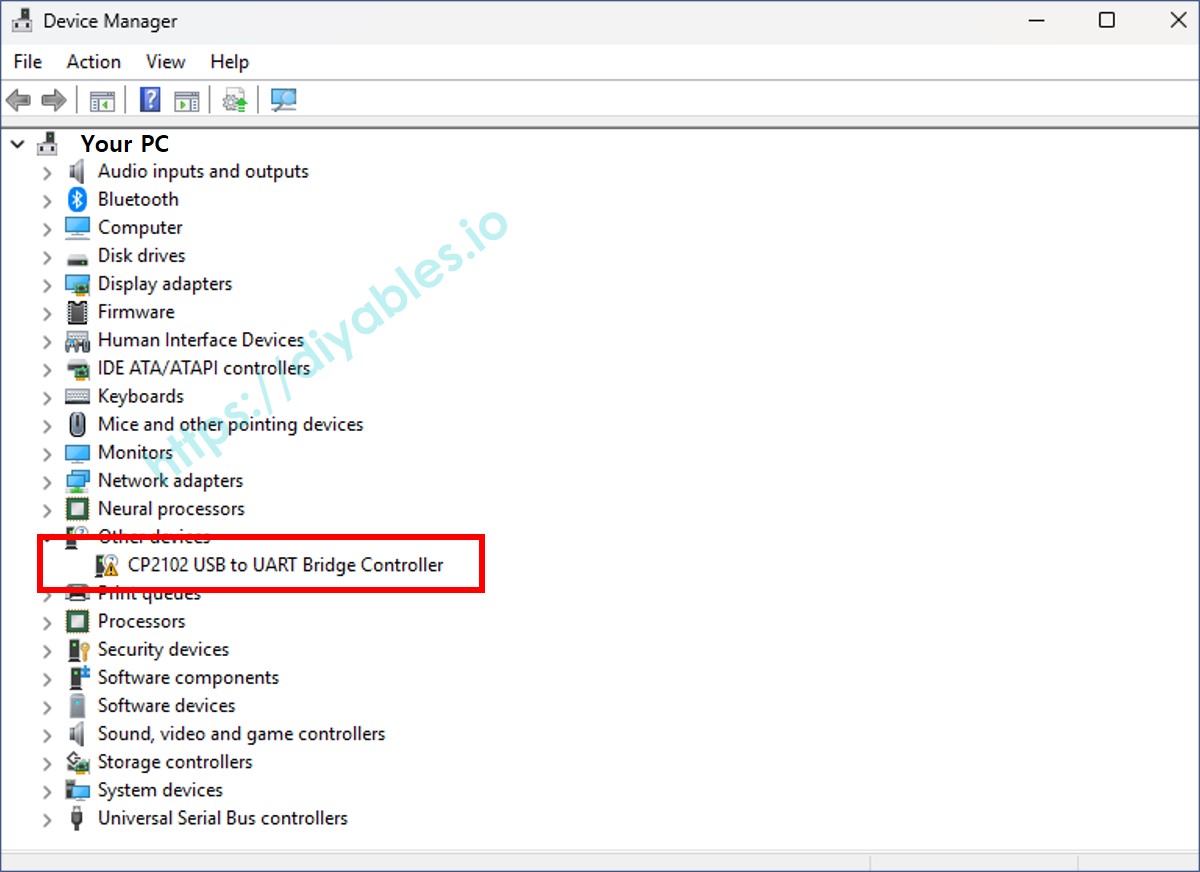
- Update the Driver
- Right-click the detected serial device (e.g., “USB Serial Port”) and select Update driver.
- Choose Browse my computer for drivers in the pop-up window.
- Locate the Unzipped Folder
- Click Browse, navigate to the folder containing the unzipped driver, and select it.
- Click Next and follow the on-screen instructions to complete the installation.
- Complete the Installation
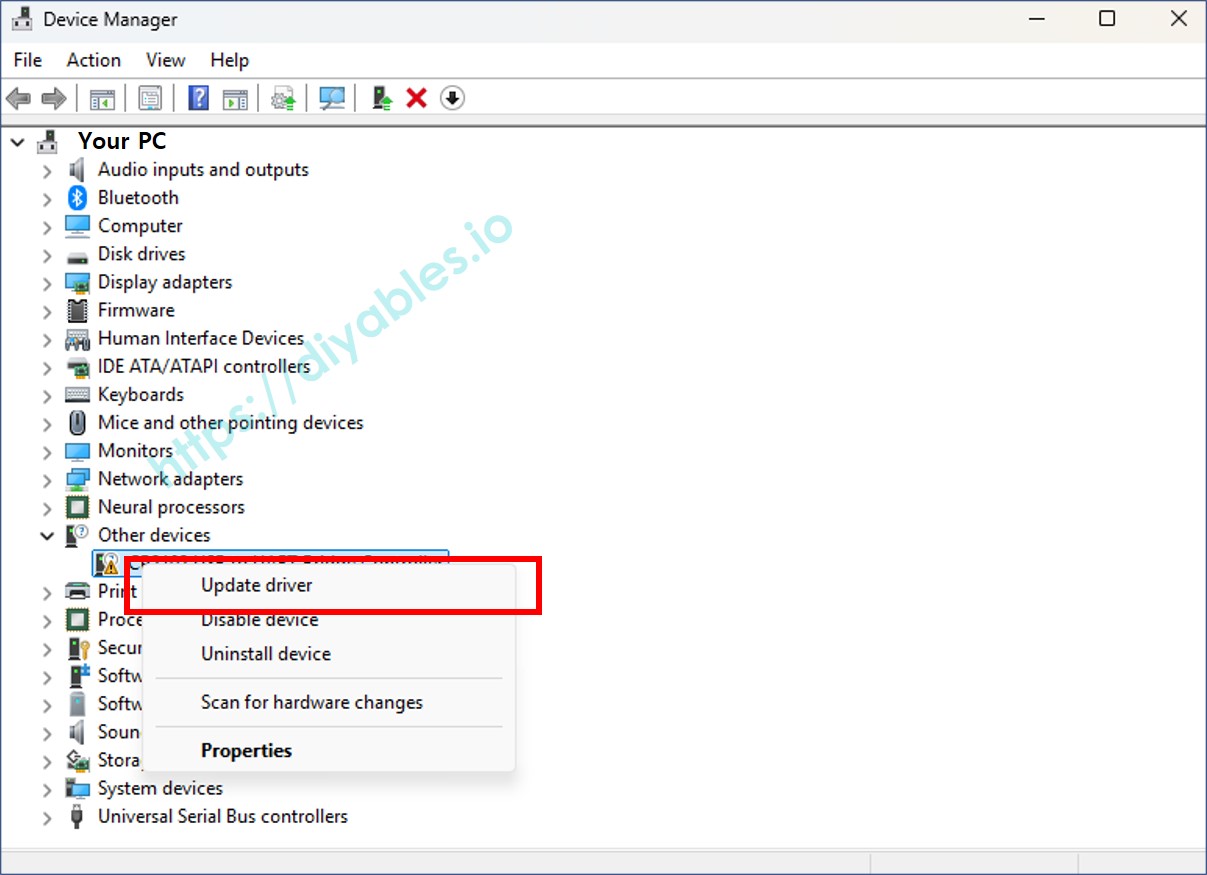

After installation, the device should appear correctly under Ports (COM & LPT) in Device Manager, as shown below:
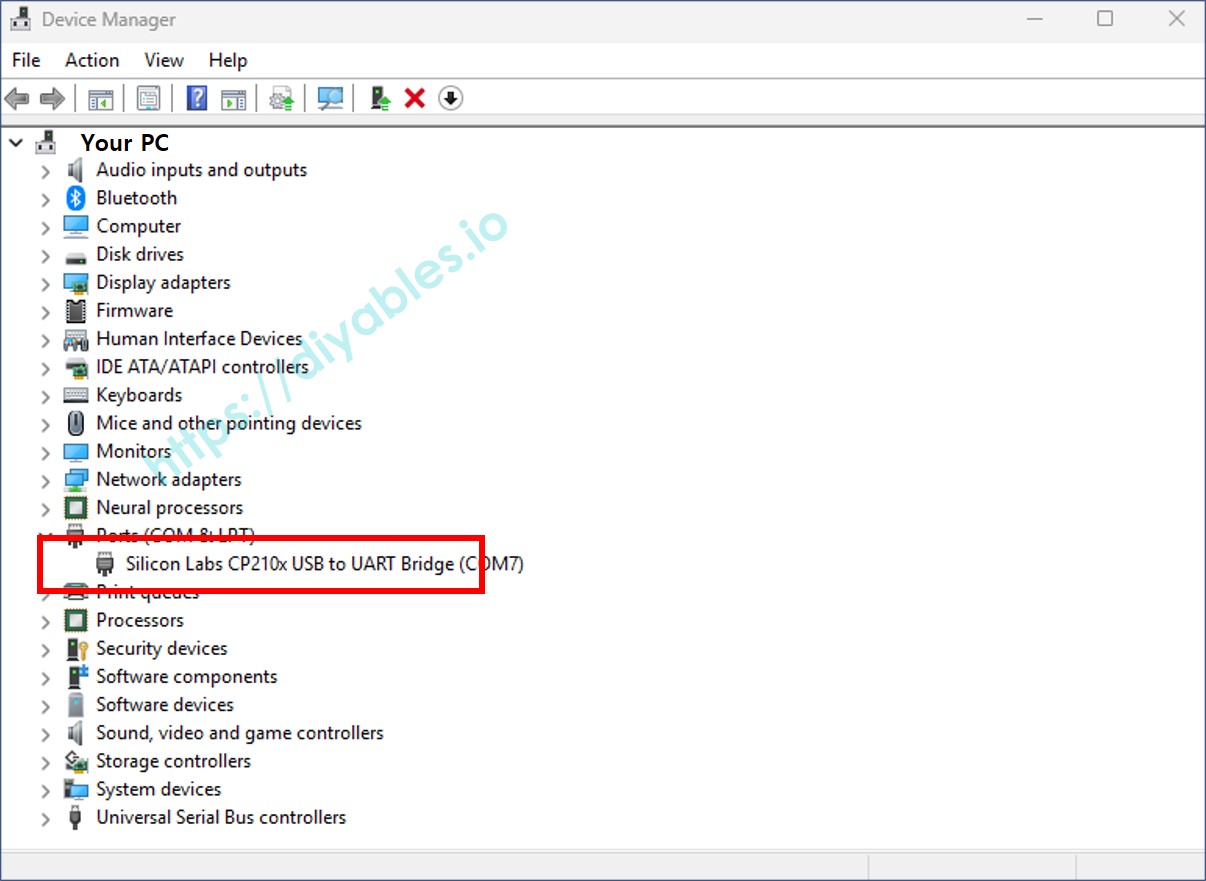
Note: If the driver installation fails, uninstall the existing driver for the COM port before repeating the steps above.
ARDUINO IDE BOARD SELECTION
- Connect the DIYables ESP32 board to your computer via a USB cable.
- Open the Arduino IDE.
- Select the ESP32 Dev Module and the appropriate COM port.
